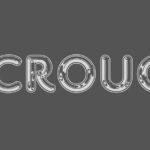The insulation industry has seen rapid innovation and advancement in recent years, especially when it comes to foam insulation boards.
As energy efficiency standards rise and construction practices evolve, foam board technology has adapted through new materials, enhanced properties, and inventive applications.
Advanced Materials Expand Options
One of the biggest areas of innovation has been the components used to manufacture foam boards. Traditionally, foam boards were made from polyurethane or polystyrene foams. Now, manufacturers offer a wider range of material options like the following:
- Polyisocyanurate (Polyiso): Polyiso combines the best attributes of polyurethane and isocyanurate to achieve exceptional R-values up to R-7 per inch. It offers improved dimensional stability and moisture resistance compared to other foams.
- Expanded Polystyrene (EPS): Advancements in expanding agent chemistry have enabled EPS formulas with higher insulation performance. EPS provides cushioning against vibration and impact.
- Extruded Polystyrene (XPS): XPS foam has a closed-cell structure with high compressive strength ideal for structural insulating panels. Its rigidity suits below-grade foundations.
These new material choices provide tailored property profiles from high insulation value to moisture/chemical resistance to structural integrity.
Advanced Production Techniques
Manufacturing processes for foam boards have also improved drastically. Extrusion methods now allow for highly customized foam shapes, densities, and properties. This permits insulation that is fine-tuned for specific usage conditions inside walls, roofs, and floors.
Manufacturers use techniques like lamination to produce multi-layer foam boards with reinforced facers. These enhancements bolster rigidity, environmental stability, and longevity while retaining slim form factors. Such protective facings may include coatings or materials like aluminum, fiberglass cloth, acrylic, or vinyl.
Nanotechnology and Cellular Manipulation
The use of nanotechnology is another cutting-edge trend in foam board engineering. Scientists are developing advanced nano-porous foam structures and microcellular designs to substantially boost thermal resistance. Adding tiny graphite nanoparticles or carbon nanofibers helps reflect radiant heat at the microscopic scale. While still under development, these technologies hint at insulation beyond today’s limits. Manufacturers also experiment with injecting foam with specialty gases to influence cell formation and enhance properties.
Smart Insulation Boards
Smart insulation boards with embedded sensors represent a futuristic category under exploration. InsulationPoint noted that the sensors can track insulation performance metrics in real-time like thermal conductivity, temperature gradients, and heat flow. This data enables active optimization of building energy efficiency and early detection of any issues. It may also allow insulation boards to adaptively regulate heat flow via advanced materials with adjustable properties modified by electric signals. The integration of smart technology and digital connectivity will enable advanced insulation capabilities.
Innovative Application Techniques
Application techniques for insulation boards have also expanded greatly. Composite insulating panels combining foam boards with stud framing create solutions with high thermal mass and air tightness for walls, roofs, and floors. Meanwhile, adhesive-backed boards enable simplified insulation retrofits by directly bonding to existing structures.
Spray foam insulation and pour-fill options that expand in place provide air sealing while conforming to hard-to-fill cavities like rim joints or irregular gaps. Compatibility with wall systems like rainscreens and thermally broken brackets enable exterior insulation finishes that balance efficiency with moisture control. These inventive application methods expand possibilities.
Sustainability Improvements
Ongoing foam board innovation aims to address sustainability through greener materials and manufacturing. The use of recycled plastic, plant-based polymer foams utilizing soy or castor oil, and renewable resource-derived thermal barriers on facings is growing. Manufacturers are also working on methods for recycling used foam boards into new insulation. These initiatives reduce environmental impacts from sourcing through end-of-life. They allow insulation to align with corporate sustainability goals targeting net zero buildings.
Enhanced Safety and Code Compliance
Industry safety standards and building codes have progressed in parallel, leading to fire-resistant foam boards that withstand flames, high heat, and other demanding conditions. These enhanced fireproofing properties expand insulation applications to bounded spaces like basements or attics. Strict off-gassing tests also ensure minimal volatile organic compound (VOC) emissions for healthier indoor air quality. Upgraded safety earns the compliance for foam boards to qualify under the latest energy-efficiency regulations.
Future Outlook
The future looks bright for advanced foam board insulation driving increased building energy savings. Manufacturers project continued innovation as environmental motivations and regulations intensify globally. With multiple new materials already proven viable through research, expect growing hybridization for boards with dialed-in functionality. Production automation will also unlock customization at scale to cost-effectively match boards to application parameters based on climate, structure, budget, and goals.
Sensing and connectivity are primed to penetrate insulation, offering builders and owners tangible data for updated standards compliance and performance verification. Progress in nanotechnology and chemical modification may realize next-generation “smart insulation” with game-changing thermal capabilities. Importantly, sustainability will underpin most advancements as net zero construction goes mainstream in newly announced codes. Recycling infrastructure around foam waste should mature in parallel to complete material life cycles.
Overall foam board technology sits poised to deliver outsized benefits enabling buildings as true assets for owner value, occupant health, and environmental stewardship. Future-focused insulation solutions will participate in reimagining structures themselves as responsive, regenerative organisms achieving the highest economic and ecological efficiency. With a spirit of visionary invention, foam insulation boards look set to excite for decades ahead.
The Path Forward
In summary, foam board technology continues rapidly developing through cutting-edge materials, advanced production techniques, inventive application constructions, and sustainability improvements. R-values keep climbing while costs continue dropping, expanding insulation board applications. Smart insulation boards on the horizon even hint at active thermal management.
These constant innovations ensure foam boards will remain at the forefront of high efficiency building insulation for both new construction and renovations. Contractors and architects who understand the latest board options can take advantage of their full potential to create exceptionally energy-efficient and cost-saving building envelopes with minimal ecological impact.
For more information please visit : Thisismytribe











1 thought on “Innovations in Foam Insulation Board Technology: What’s New in the Industry?”